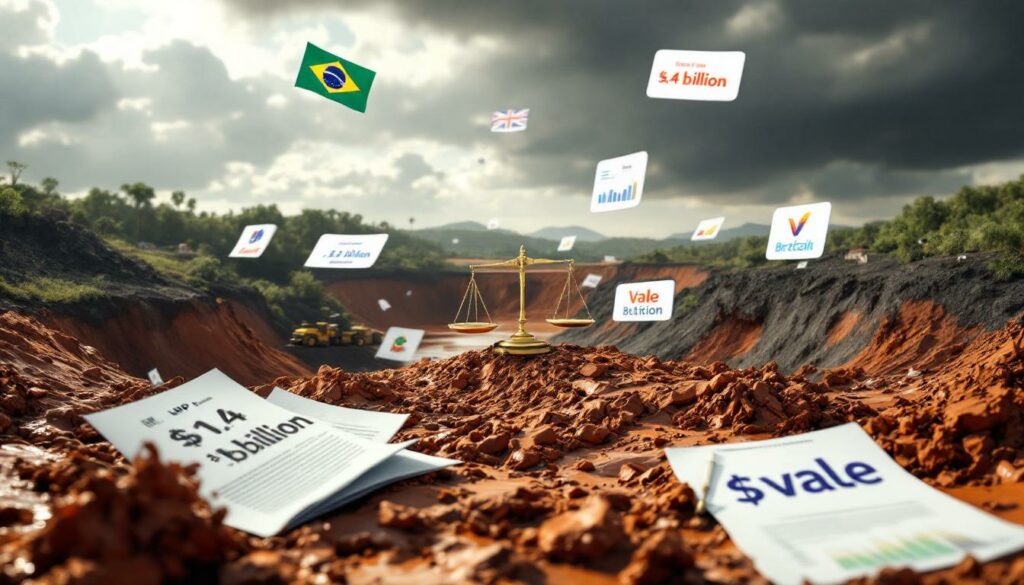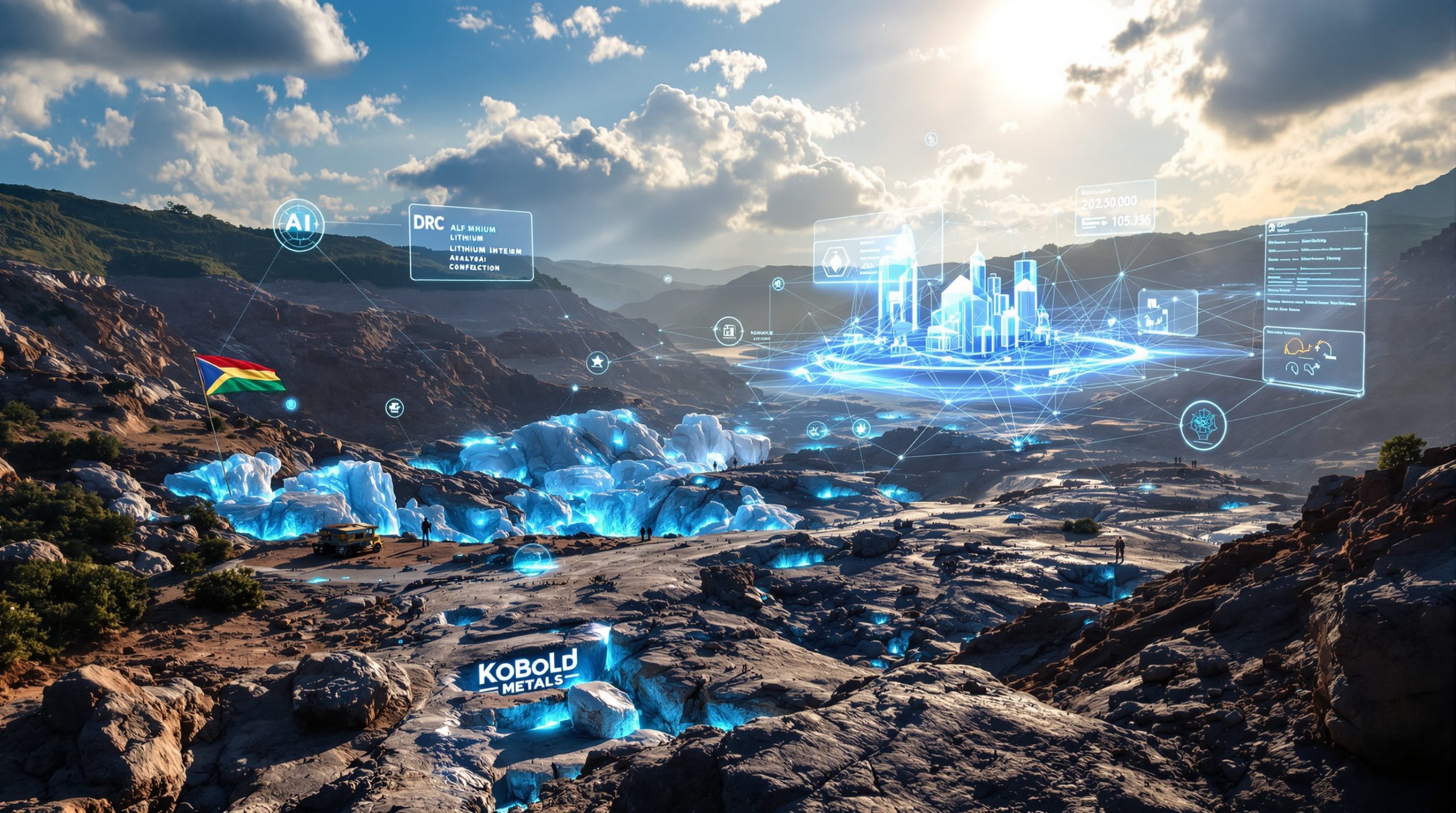BHP and Vale's $1.4 Billion Settlement Proposal: Understanding the Mariana Dam Disaster Aftermath
The 2015 Mariana dam disaster stands as one of Brazil's most devastating environmental catastrophes, with far-reaching consequences that continue to reverberate through communities, ecosystems, and corporate boardrooms alike. Mining giants BHP and Vale now face a pivotal moment as they propose a $1.4 billion settlement to address the extensive damage caused by this tragic event.
What Was the Mariana Dam Disaster and Why Is It Significant?
The Mariana dam collapse occurred on November 5, 2015, in Brazil's southeastern state of Minas Gerais when the Fundão tailings dam failed catastrophically. Owned by Samarco, a joint venture between mining corporations BHP and Vale, the collapse unleashed approximately 43 million cubic meters of iron ore waste and toxic sludge into the surrounding environment.
This toxic deluge created a devastating path of destruction as it flowed through the Rio Doce river basin, traveling over 650 kilometers to reach the Atlantic Ocean. The environmental consequences were immediate and severe—entire villages were destroyed, pristine waterways contaminated, and ecosystems devastated in what experts widely recognize as Brazil's worst environmental disaster.
The 2015 Environmental Catastrophe
The scale of destruction defies simple description. The torrent of toxic mud obliterated the village of Bento Rodrigues, giving residents barely 25 minutes to evacuate before their homes were swept away. Nineteen people lost their lives, while thousands more saw their livelihoods destroyed overnight.
The environmental damage extended far beyond the immediate impact zone:
- Contamination of the Rio Doce river system with heavy metals including arsenic, lead, and mercury
- Destruction of over 1,400 hectares of riparian forests and vegetation
- Decimation of aquatic life along hundreds of kilometers of waterway
- Compromised drinking water for over 200 communities along the river basin
- Long-term soil contamination affecting agricultural viability
"The Mariana disaster represents a watershed moment for mining industry accountability, forcing a global reconsideration of tailings dam safety standards and corporate responsibility," noted an environmental policy expert familiar with the case.
The Samarco Joint Venture Structure
Understanding the corporate structure behind the disaster provides crucial context for the ongoing legal battles. Samarco Mineração S.A., established in 1977, operated as a 50-50 joint venture between BHP Billiton Brasil and Vale S.A. This partnership created a complex web of operational responsibilities and financial liabilities that would later complicate questions of accountability.
At the time of the collapse, Samarco operated:
- Three concentrator facilities
- Four pellet plants
- A 396-kilometer pipeline network
- The Fundão tailings dam that ultimately failed
The disaster immediately raised fundamental questions about corporate governance and oversight. Investigations revealed troubling patterns in maintenance procedures, risk assessment protocols, and emergency response planning. Critics pointed to cost-cutting measures and production pressures as contributing factors to what many experts believe was an entirely preventable catastrophe.
How Much Are BHP and Vale Offering in the Settlement?
The $1.4 billion settlement proposal represents the latest attempt to resolve one of the most complex environmental liability cases in mining history. According to reporting by the Financial Times, this offer emerged during a June meeting in New York between the mining companies and representatives of the claimants.
Breakdown of the $1.4 Billion Settlement Proposal
The proposed settlement divides the funds into two major allocations:
- $800 million designated specifically for victim compensation
- $600 million allocated to cover legal costs associated with the UK High Court proceedings
This proposal comes against the backdrop of a much larger claim—the UK lawsuit values potential damages at up to £36 billion ($48.29 billion), highlighting the significant gap between what claimants seek and what the companies have offered.
The timing of this settlement attempt is notable, coming nearly nine years after the disaster occurred. This protracted timeline reflects the immense complexity of the case, spanning multiple jurisdictions and involving hundreds of thousands of claimants.
Key Negotiating Parties
Several major entities stand at the center of these settlement negotiations:
-
Pogust Goodhead: This British law firm represents hundreds of thousands of claimants, including individuals, municipalities, indigenous communities, and religious organizations affected by the disaster. Their role has been pivotal in bringing the case to the UK courts.
-
Gramercy: As the primary financial backer of the litigation, this U.S. hedge fund has provided the substantial resources necessary to sustain such complex international litigation over many years.
-
BHP and Vale: The mining giants have maintained separate but coordinated legal strategies throughout the proceedings, each navigating their specific exposure to liability.
The negotiation process faces numerous challenges, including the need to establish fair compensation metrics for wildly different types of damages—from immediate property loss to long-term health impacts and cultural heritage destruction.
What Legal Challenges Do BHP and Vale Face?
The legal landscape surrounding the Mariana disaster spans multiple continents and jurisdictions, creating one of the most complex environmental liability cases in history.
The UK Class Action Lawsuit
The centerpiece of the legal challenges is the massive UK-based class action lawsuit valued at up to £36 billion ($48.29 billion). This figure represents the collective claims of hundreds of thousands of Brazilian individuals and entities seeking compensation through the British legal system.
The jurisdictional complexity of the case is noteworthy. While the disaster occurred in Brazil, the lawsuit proceeds in the UK courts based on BHP's status as an Anglo-Australian company with significant corporate presence in London. This approach follows a growing trend of environmental and human rights litigants seeking justice through courts in companies' home nations rather than where disasters occur.
Key milestones in the legal timeline include:
- 2018: Initial filing of the lawsuit in the UK High Court
- 2020: UK Court of Appeal ruling allowing the case to proceed despite BHP's jurisdictional challenges
- 2022: UK Supreme Court decision permitting the case to continue, rejecting BHP's arguments against UK jurisdiction
- 2024: Expansion of claimant numbers as the case moves toward potential trial
The UK proceedings have established important precedents for corporate liability across borders, potentially opening avenues for future environmental justice claims against multinational corporations.
Corporate Defense Strategies
Both mining giants have vigorously contested the allegations while pursuing somewhat different defense approaches.
BHP has consistently rejected claims that it prioritized profit over safety, describing such allegations as "far-fetched and unjustified" in October 2024 court proceedings. The company's defense strategy centers on several key arguments:
- The corporate separation between BHP Group and its Brazilian subsidiary
- Challenges to the causation claims linking corporate decisions to the disaster
- Questions about the quantification of damages claimed by plaintiffs
Vale, while coordinating certain aspects of its defense with BHP, has maintained its own legal position regarding liability allocation within the Samarco joint venture structure.
Both companies face the additional challenge of managing this litigation while simultaneously attempting to rebuild their reputations as responsible mining operators—a delicate balancing act that has influenced their approach to settlement discussions.
How Does This Settlement Compare to Other Mining Disaster Compensations?
Mining disasters with environmental consequences have unfortunately occurred throughout industry history, providing context for evaluating the adequacy of the proposed $1.4 billion settlement.
Historical Mining Disaster Settlements
When compared to other major mining disaster settlements globally, the Mariana proposal reveals important patterns in how environmental liabilities are valued and compensated:
| Disaster | Year | Company | Settlement Amount | Environmental Impact |
|---|---|---|---|---|
| Mariana Dam (Brazil) | 2015 | BHP/Vale | $1.4B proposed ($48.29B claimed) | 43M cubic meters of toxic waste, 650km affected |
| Brumadinho Dam (Brazil) | 2019 | Vale | $7B | 12M cubic meters of waste, 270 deaths |
| Deepwater Horizon (US) | 2010 | BP | $20.8B | 4.9M barrels of oil spilled in Gulf of Mexico |
| Ok Tedi Mine (Papua New Guinea) | 1984-2013 | BHP | $500M + mine transfer | 80M tons of contaminated waste in river system |
| Bhopal Gas Tragedy (India) | 1984 | Union Carbide | $470M | Toxic gas release killed thousands |
The settlement ratios—comparing compensation to actual damage—vary dramatically across cases, influenced by factors including:
- Jurisdiction and legal frameworks where litigation occurs
- Scientific assessment of environmental recovery timelines
- Number of affected individuals and communities
- Economic valuation of ecosystem services lost
- Political and media attention to the disaster
Financial Impact on the Mining Giants
For BHP and Vale, the financial implications extend well beyond the immediate settlement amount. Both companies have already allocated significant resources to disaster response:
- Share price impacts: Both companies experienced substantial share value declines following the disaster, with periodic fluctuations corresponding to legal developments
- Credit rating considerations: Rating agencies have factored liability exposure into their assessments
- Insurance recovery challenges: Complex questions about coverage limits and exclusions have complicated financial planning
- Operational changes: Both companies have invested heavily in improved tailings management systems across their global operations
Beyond direct financial metrics, the disaster has fundamentally altered how both companies approach risk management, community relations, and environmental governance—representing a significant if less quantifiable cost.
What Are the Long-Term Implications for Corporate Accountability?
The Mariana disaster has become a watershed moment for how the global mining industry approaches environmental risks and corporate responsibility.
Regulatory Changes Since Mariana
In the aftermath of the disaster, Brazil and other mining jurisdictions implemented sweeping regulatory reforms:
- Brazil's National Mining Agency established more stringent dam safety inspection requirements
- Classification systems for high-risk tailings facilities were revised
- Emergency action planning requirements were strengthened
- Independent technical reviews became mandatory for critical infrastructure
- Real-time monitoring technologies were required for higher-risk facilities
Perhaps most significantly, the International Council on Mining and Metals (ICMM) developed the Global Industry Standard on Tailings Management in 2020, creating the first global standard for tailings facilities that has been adopted by major mining companies worldwide.
ESG Impact on Mining Operations
The disaster accelerated fundamental shifts in how environmental, social, and governance (ESG) factors influence mining operations:
- Investor expectations: Institutional investors now routinely demand detailed disclosure of tailings management practices and risks
- Community consent: Mining companies face heightened requirements to secure and maintain social license to operate
- Executive accountability: Board-level oversight of safety and environmental risks has been strengthened
- Technological investment: Resources allocated to monitoring technologies have increased substantially
- Transparency requirements: Public disclosure of risk assessments has become an industry expectation
These changes represent more than regulatory compliance—they reflect a fundamental recalibration of how mining companies must operate to maintain access to capital, resources, and markets in a post-Mariana world.
What Environmental Remediation Efforts Have Occurred?
The environmental aftermath of the Mariana disaster has necessitated one of the largest remediation efforts in mining history, with mixed results nearly nine years later.
Rehabilitation Progress in Affected Areas
Environmental recovery efforts have proceeded through multiple phases:
- Immediate containment to prevent further spread of contaminated materials
- Waste removal from critical areas including residential zones and water sources
- River system rehabilitation focusing on bank stabilization and revegetation
- Water quality improvement through filtration systems and natural remediation
- Ecosystem restoration including reintroduction of native species
Progress has been uneven across these domains. While visible waste removal has largely been completed in populated areas, the deeper ecological restoration faces significant challenges:
- Heavy metal contamination remains in river sediments throughout the watershed
- Groundwater quality continues to show elevated levels of concerning compounds
- Biodiversity recovery remains significantly below pre-disaster levels
- Soil productivity in agricultural areas shows persistent negative impacts
"Environmental recovery from disasters of this magnitude requires generational timeframes, not quarterly reporting cycles," notes a biologist involved in restoration monitoring.
The mine reclamation evolution has been substantially influenced by lessons learned from Mariana, as companies and regulators recognize the immense challenges of restoring severely damaged ecosystems.
Community Rebuilding Initiatives
Beyond the natural environment, the disaster devastated human communities, requiring extensive rebuilding efforts:
- Construction of new settlements for displaced residents
- Establishment of alternative livelihood programs for those dependent on river resources
- Healthcare monitoring systems for exposed populations
- Cultural heritage preservation and restoration initiatives
- Economic diversification programs to reduce dependency on mining activities
The effectiveness of these programs has varied widely, with many affected communities reporting significant gaps between promises made and results delivered. This disparity underscores the challenges of translating financial settlements into meaningful recovery for affected communities.
FAQ: Key Questions About the Mariana Dam Settlement
What caused the Mariana dam to collapse?
Technical investigations identified multiple contributing factors to the Fundão dam failure:
- Structural design flaws in the original dam construction
- Drainage system inadequacies that allowed saturation of critical structural elements
- Insufficient monitoring of warning indicators in the months preceding failure
- Operational decisions that altered the dam's intended use patterns
- Maintenance deferrals that failed to address known vulnerabilities
Expert assessments consistently concluded that the disaster was preventable with proper engineering oversight and risk management practices. The failure represents a cascading series of technical and management shortcomings rather than an unforeseeable event.
Will the settlement be accepted by the claimants?
The likelihood of settlement acceptance remains uncertain and depends on several key factors:
- The significant gap between the $1.4 billion offer and the $48.29 billion claim creates immediate challenges
- Claimant groups have diverse priorities and damage assessments
- The protracted timeline has created settlement fatigue among some parties
- Litigation financing arrangements may influence settlement decisions
- Court rulings on preliminary matters could shift negotiating leverage
Historical precedent suggests that initial settlement offers in complex environmental cases rarely represent final resolution terms. Further negotiation appears likely, potentially extending the timeline for final resolution.
How does this case influence mining industry practices?
The Mariana disaster has catalyzed industry-wide transformations:
- Engineering standards: Fundamental reconsideration of tailings dam design parameters
- Risk assessment: More conservative approaches to failure probability calculations
- Technology adoption: Accelerated implementation of monitoring technologies including satellite monitoring, fiber optic sensors, and drone inspections
- Corporate governance: Elevated board-level attention to operational safety risks
- Transparency practices: Increased public disclosure of facility conditions and risk factors
These changes extend beyond direct regulatory requirements, reflecting a deeper recognition that catastrophic failures represent existential threats to mining companies' ability to operate.
What happens if the settlement is rejected?
If the current settlement proposal fails to gain acceptance, several alternative pathways emerge:
- Continued litigation through the UK court system, potentially extending for several more years
- Revised settlement offers with adjusted compensation terms or distribution mechanisms
- Parallel proceedings in multiple jurisdictions creating additional complexity
- Potential bankruptcy considerations for the Samarco joint venture if liabilities exceed manageability thresholds
- Regulatory interventions by Brazilian authorities seeking to accelerate resolution
The protracted uncertainty carries costs for all parties—claimants face delayed compensation, companies confront ongoing reputational damage and legal expenses, and affected ecosystems experience deferred full-scale remediation.
The Future of Mining Disaster Accountability
The Mariana disaster and its aftermath represent a pivotal moment in the evolution of corporate accountability for environmental catastrophes. As the case continues to unfold, several key trends are becoming apparent:
The traditional calculation of environmental externalities is fundamentally changing, with courts increasingly willing to recognize the full spectrum of impacts from ecological damage to cultural heritage loss.
Technology is transforming both how disasters can be prevented and how responsibility can be assigned when they occur. Advanced monitoring systems create more complete records of conditions before failures, allowing for more precise attribution of responsibility.
Community expectations have permanently shifted regarding acceptable risk, transparency requirements, and compensation standards when harm occurs. These elevated expectations apply globally, not merely in developed economies with robust regulatory frameworks.
The financial markets have internalized these new realities, with ESG considerations now firmly embedded in valuation models, capital allocation decisions, and financing terms for extractive industries. This sustainability transformation in mining has been accelerated by disasters like Mariana.
As mining remains essential for the global transition to renewable energy technologies, the industry faces the dual challenge of increasing production while simultaneously transforming its approach to environmental risk. The resolution of the Mariana case will establish important precedents for how this balance is struck in the decades ahead.
For affected communities, environmental systems, and the mining industry itself, the legacy of Mariana will continue to shape decisions, standards, and expectations long after the final settlement terms are determined. The BHP strategic pivot toward more sustainable operations is partly influenced by lessons learned from this catastrophe, while increased government intervention in mining has been one of the most visible consequences.
Want to Stay Ahead of Major Mining Discoveries?
Discover why significant mineral finds like those discussed can lead to exceptional market returns by exploring Discovery Alert's dedicated discoveries page. Powered by the proprietary Discovery IQ model, Discovery Alert provides instant notifications on ASX mineral discoveries, giving you a decisive market advantage before the broader market reacts. Start your 30-day free trial today at https://discoveryalert.com.au/discoveries/.




